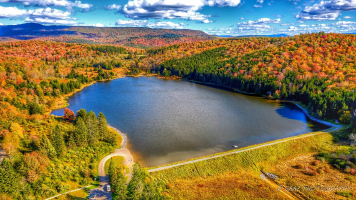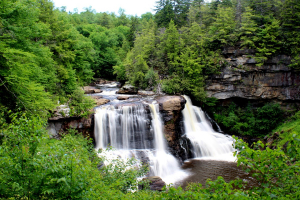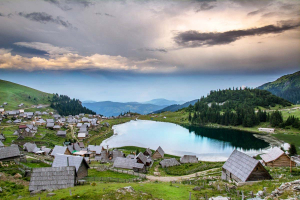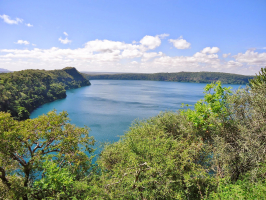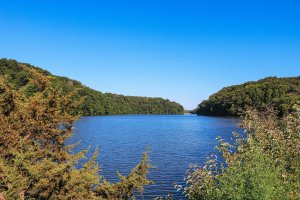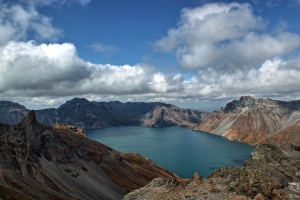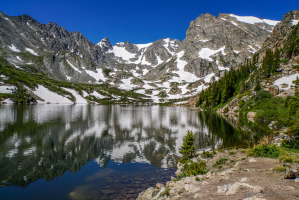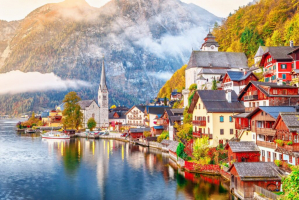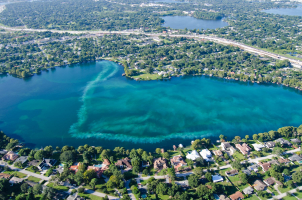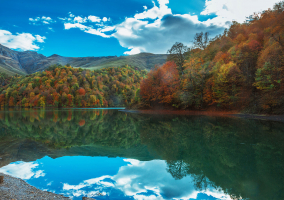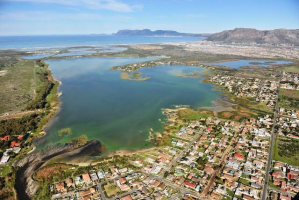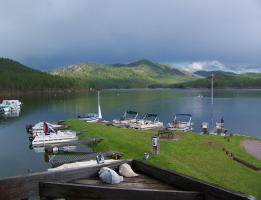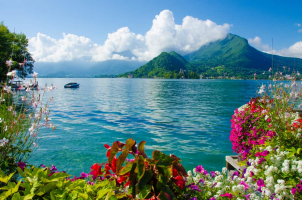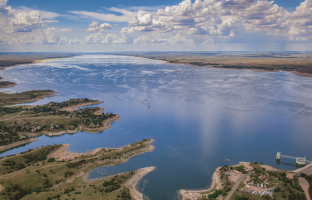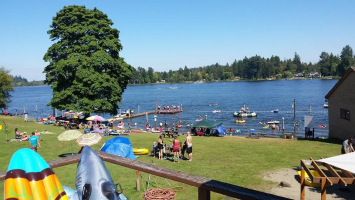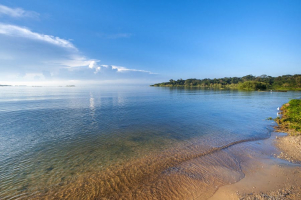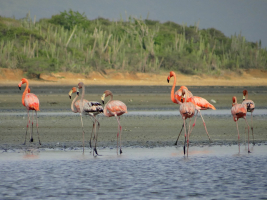Top 12 Best Lakes To Visit in West Virginia
The lakes are the ideal summer destination for those who want a place to relax and cool off without descending to cramped beach destinations. In a beautiful ... read more...region like West Virginia, there is no shortage of beautiful lakes. Let's join Toplist to discover the best lakes in West Virginia!
-
A reservoir called Summersville Lake is located in the US state of West Virginia. South of Summersville in Nicholas County, a rock-fill dam called the Summersville Dam on the Gauley River creates the lake. With 2,700 acres (1,100 hectares) of water and more than 60 miles (97 km) of shoreline at the summer pool water level, it is the largest lake in West Virginia. Its deepest point is 327 feet.
Additionally, the lake is used as a recreational place for boating, fishing, rock climbing, scuba diving, and other water sports. The Gauley River National Recreation Area's eastern (upstream) terminus can be found there. Under the lake, there is a little boat that was deliberately sunk so that scuba divers would have something to look at. A no-wake zone for recreational boating is located beyond the bridge that Route 19 uses to cross the lake. The Summersville Lake Lighthouse, West Virginia's only operational lighthouse, is situated on the cliffs above Summersville Lake. Since 2007, cliff jumping has been prohibited at Summersville Lake.
Location: Nicholas County, West Virginia
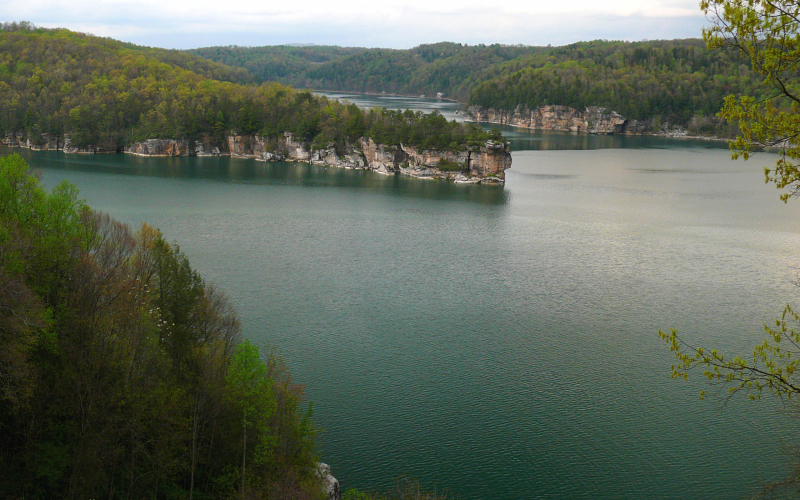
Photo: wikipedia 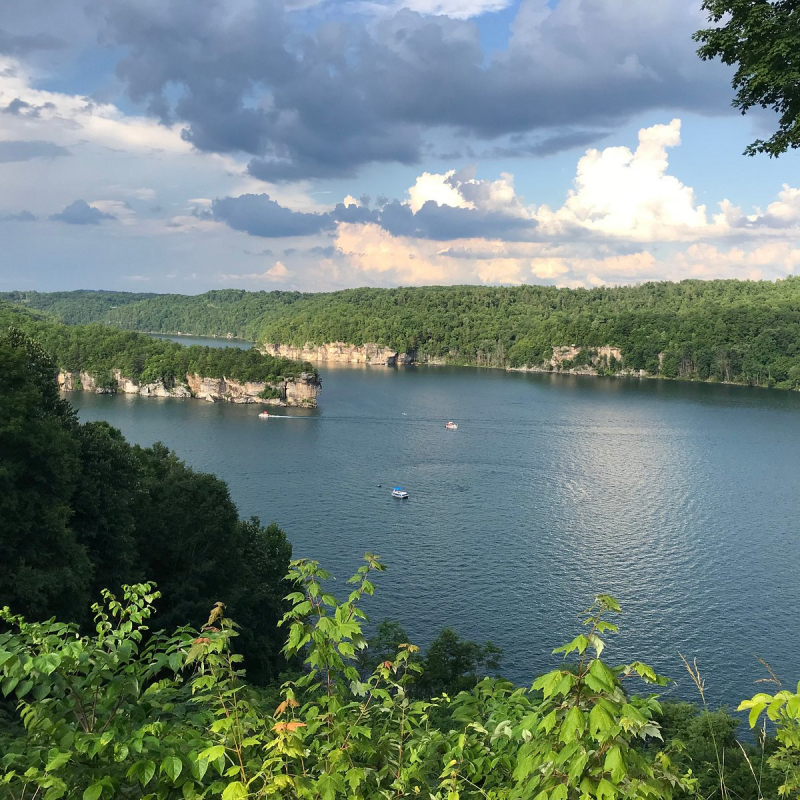
Photo: tripadvisor.com -
A flood control reservoir called Bluestone Lake is situated on the New River not far from Hinton, West Virginia. Bluestone Dam impounds a 10.7-mile (17.2-km) section of the New River and its tributary, the Bluestone River, at its usual pool level. The lake can expand to about 36 miles (58 km) in length at the flood control pool, although typically only 2,040 acres (8.3 km2) in size. The lake stretches into Giles County, Virginia, at higher water levels.
A concrete gravity dam called Bluestone Dam, which is situated slightly upstream of the meeting point of the New and Greenbrier Rivers, creates the lake. The dam is 2,048 feet (624 m) long and 165 feet (50 m) high. The dam was approved by the U.S. Congress in the Flood Control Acts of 1936 and 1938 and by Presidential Executive Order in 1935. Early 1941 saw the start of construction on the project, which was put on hold in 1944 due to World War II. Resuming in 1946, work was finished in 1949 for operational needs.
Bluestone Lake offers a variety of leisure options, such as boating and fishing, due to its size. The lake is partially covered by Bluestone State Park and Bluestone Wildlife Management Area, both of which are maintained by the West Virginia Division of Natural Resources. These facilities offer camping and other activities.
Location: Hinton, West Virginia
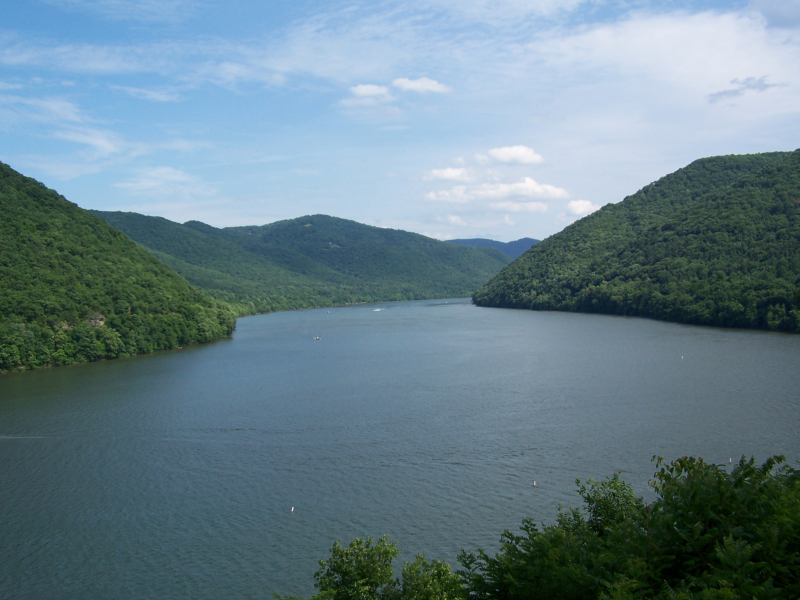
Photo: wikipedia 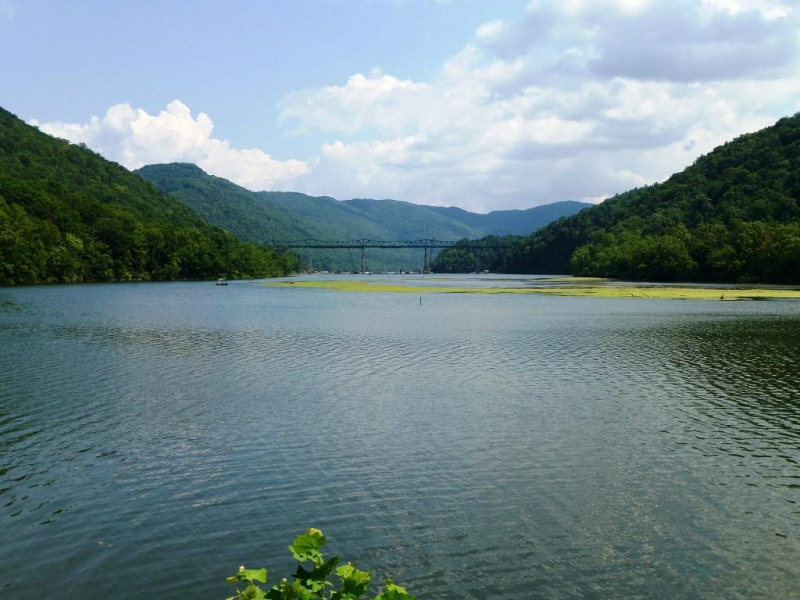
Photo: tripadvisor.com -
East Lynn Lake is situated in Wayne County, West Virginia that is 1,005 acres (4 km2) in size. The U.S. Army Corps of Engineers, Huntington District, manages the lake as part of a number of flood control initiatives for the Ohio River basin. The settlement of Stiltner at the mouth of Brush Creek was completely destroyed during the construction of the lake. It also necessitated the relocation of a significant portion of West Virginia Route 37, which had previously followed the lake-inundated East Fork Twelvepole Creek valley.
In addition to carp and other non-native species, East Lynn Lake is home to 29 fish species that are native to southern West Virginia. The East Lynn Lake Wildlife Management Area, which oversees the lake and the surrounding land, is regularly filled by the West Virginia Division of Natural Resources.
The lake's wake-permitted and no-wake zones make it a favorite for both water skiing and fishing. A campground by the lake is one of many recreational places that the Army Corps of Engineers maintains. Near the dam, there is a marina as well.
Location: Wayne County, West Virginia
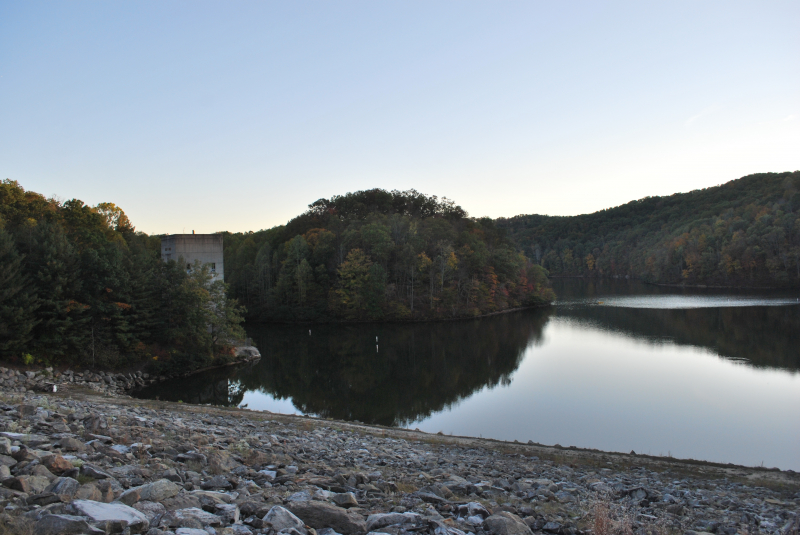
Photo: wikipedia Video: WV Travelers -
On the Little Kanawha River, southeast of Burnsville in Braxton County, West Virginia, is Burnsville Lake, which serves as both a recreational and flood control reservoir. The Flood Control Act of 1938, passed by the US Congress, gave Burnsville Lake its green light.
The Burnsville Lake project's dam was built beginning in the summer of 1972, and it was finished in September 1976. The lake project regulates the runoff from a 165 square mile (427 km2) drainage area. The dam is an embankment dam made of rock fill that rises 84.5 feet (25.8 meters) above the streambed. The crest length is 1,400 feet, and the top elevation is 839 feet (256 m) above sea level (430 m).
Since the dam's backwaters would flood both currently inhabited places and the locations of ancestors' homes, many residents of Burnsville and the surrounding communities opposed its construction. Both residents and cemeteries had to be relocated. Prior to the dam's construction, Burnsville inhabitants had to go to Bulltown for recreational opportunities.
Location: Braxton County, West Virginia
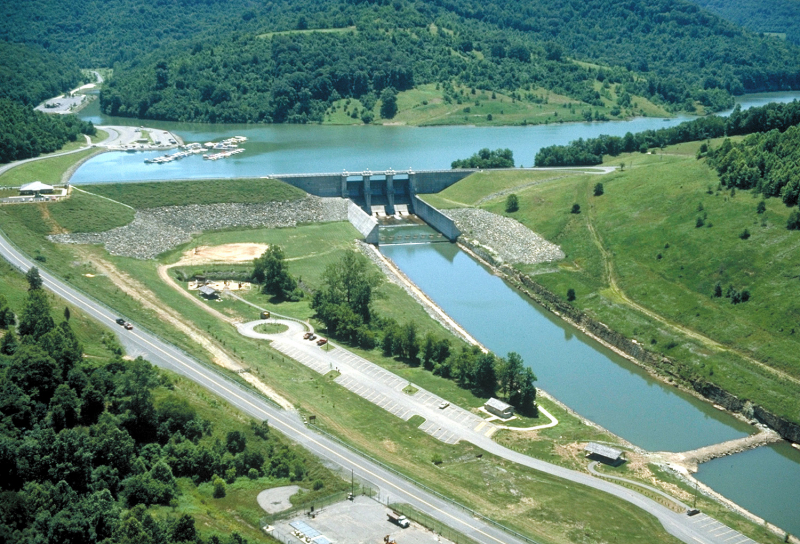
Photo: wikipedia 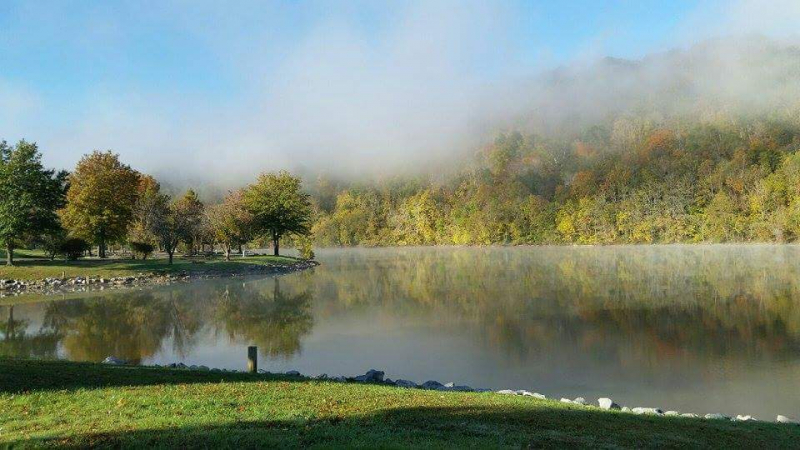
Photo: wvtourism.com -
One of the best lakes to visit in West Virginia is Sleepy Creek Lake. The entire 83 hectare Sleepy Creek Wildlife Management Area contains this lake. It is a beautiful lake encircled by an oak and pine forest.
The West Virginia Division of Natural Resources (WVDNR) built Sleepy Creek Lake, which was finished in 1962. In 1964, the lake's fishing season began. In 1989, the WVDNR started stocking the reservoir with the northern pike. The 23,000-acre (90 km2) Sleepy Creek Wildlife Management Area, which is located in both Morgan and Berkeley counties, has a reservoir known as Sleepy Creek Lake, which is situated at a height of 1,099 feet (335 m).
A lake is a great place for fishing due to the presence of largemouth bass, northern pike, bluegill, and crappie. On the lake, only electric motorboats are permitted, and night fishing is not permitted.
Sleepy Creek Lake has three campgrounds along its eastern coast, all of which are located there. There are a total of 75 primitive camping areas available to those who want to spend the night.Location: Berkeley County, West Virginia
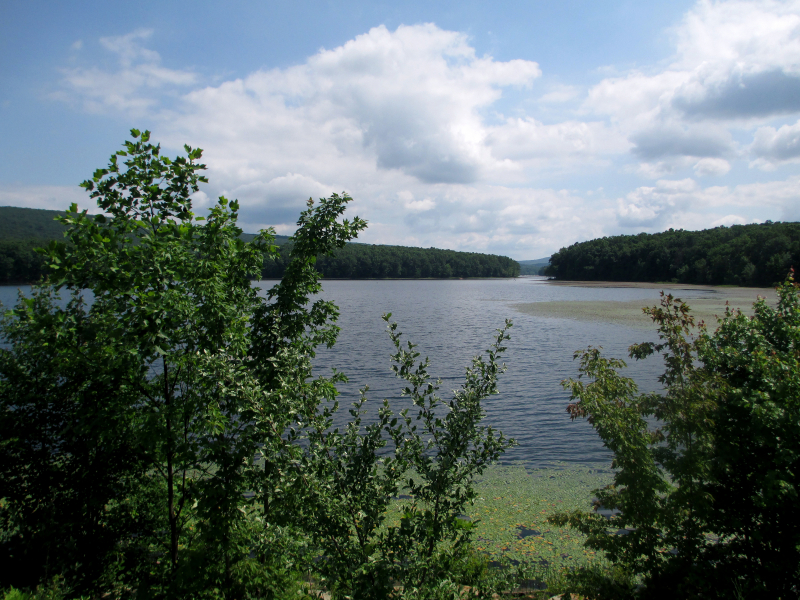
Photo: wikimedia Video: Martinsburg-Berkeley County CVB -
The highest peak in West Virginia, Spruce Knob, is west of Spruce Knob Lake Campground. Spruce Knob - Seneca Creek Backcountry, which has 60 miles of trails waiting to be explored, is also close by. Gatewood Campground is a nearby option for those seeking group camping.
Spruce Knob Lake offers fishing opportunities. The 25-acre lake was constructed in 1952 specifically for fishing, and the West Virginia Division of Natural Resources routinely stocks it with trout. Fishing is enjoyable for novice fishermen since there are so many little yet hungry bluegills near the beach. On the lake, electric trolling motors and non-motorized boats are both allowed. A small boat launch, a parking area, and vault restrooms are all present. Accessible from all directions is provided by a wooden pier along the shore. The Whispering Spruce Trail, which circles the lake, is a worthwhile hike. Additionally, it is the greatest location for taking in breathtaking panoramic views of the lake and its surroundings.
Location: Randolph County, West Virginia
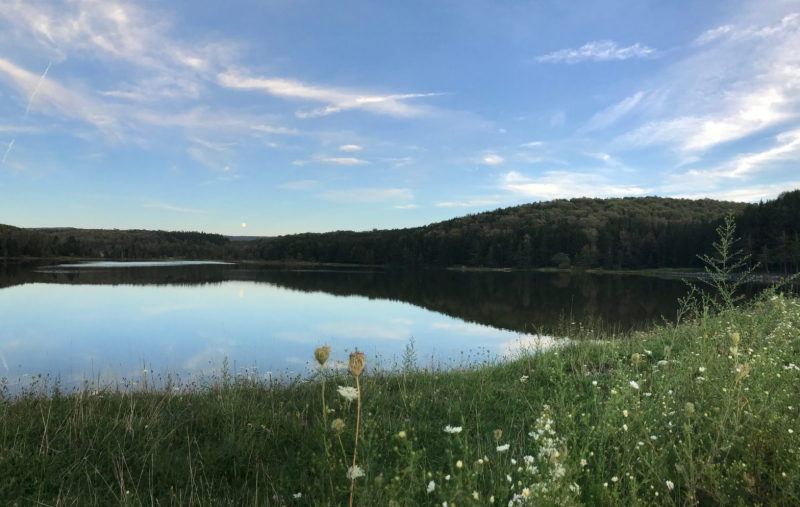
Photo: elkinsrandolphwv.com 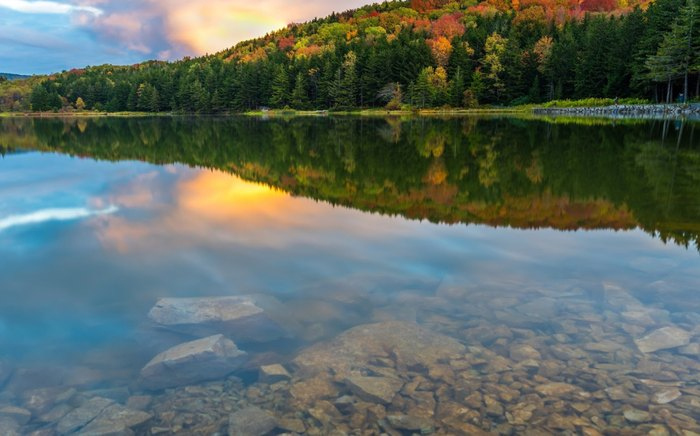
Photo:onlyinyourstate.com -
A 2.9 km2 reservoir known as Beech Fork Lake is situated close to Lavalette in Wayne County, West Virginia, in the United States. Additionally, a portion of Beech Fork Lake is situated in nearby Cabell County. The majority of the lake surface of Beech Fork Lake comes from the individual river basins of Millers Fork and Stowers Branch, which join Beech Fork. These rivers flow into Twelvepole Creek as tributaries.
Your next trip should be spent at Beech Fork State Park. Make enduring moments with your family while taking advantage of the outdoors. This 3,144-acre park, which is tucked away in the hills of southwest West Virginia, has countless campsites, miles of hiking trails, and a variety of thrilling lake activities for the whole family to enjoy well until dusk. Cast a line and catch some of the most well-liked sport fish in West Virginia at the expansive 720-acre lake's 31 miles of shoreline. Beech Fork is the ideal vacation for travelers from nearby states and towns, such as Cincinnati, Ohio, and Lexington, Kentucky, as they are only 12 miles from Huntington and Barboursville. This lake is one of the best lakes to visit in West Virginia.
Location: Wayne & Cabell Counties, Virginia
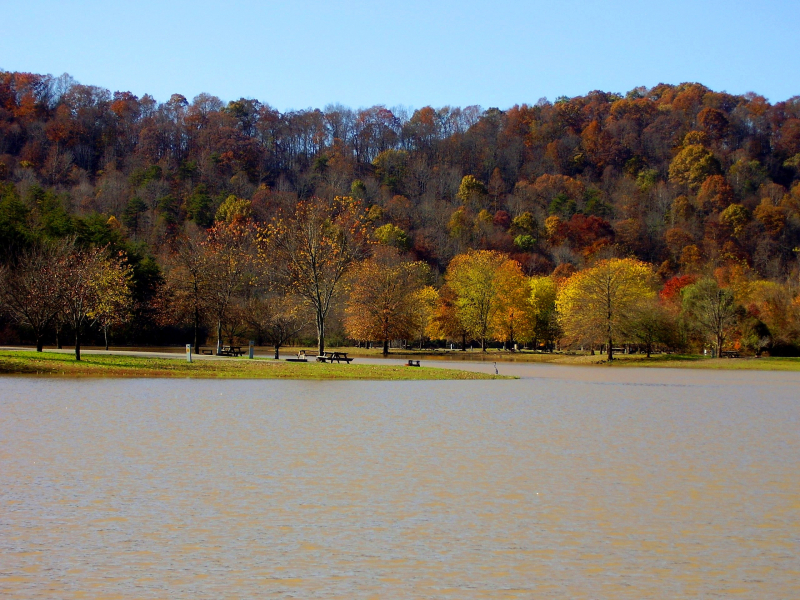
Photo: wikipedia 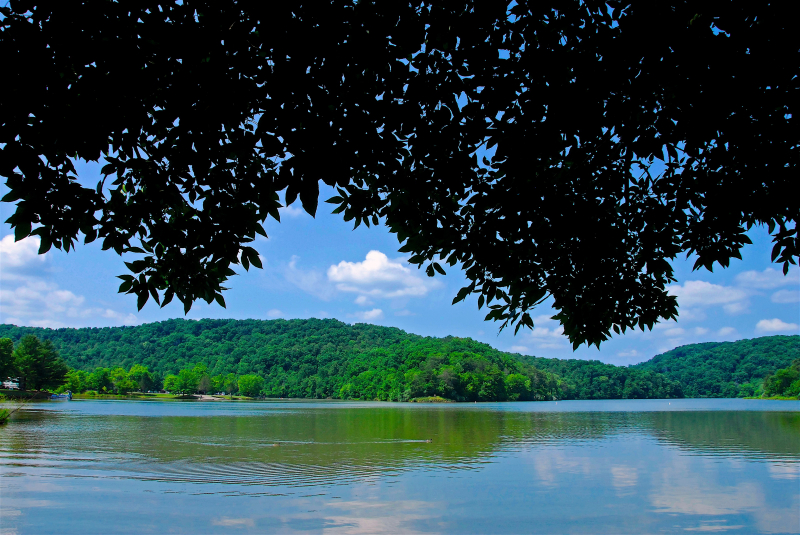
Photo: wvstateparks.com -
Jennings Randolph Lake is a 952-acre (3.85 km2) reservoir that spans Garrett County, Maryland, and Mineral County, West Virginia. It is situated on the North Branch of the Potomac River. It is roughly five miles north of Elk Garden, West Virginia, and eight miles upstream of Bloomington, Maryland.
The United States built the lake. US Army Corps of Engineers (USACE), as defined in House Document No. 469, 87th United States Congress, Second Session. The USACE was established by the Flood Control Act of October 23, 1962. It was renamed Jennings Randolph Lake in 1987 from "Bloomington Dam" to recognize the US Senator from West Virginia who played a key role in this and numerous other water resource initiatives around the country.
Here, you can go swimming, boating, fishing, kayaking, water skiing, hiking, and eagle-watching. Camping is an option for visitors who want to stay longer, or they can spend more money and stay at the exclusive lakeside resort. The 385 hectare lake is incredibly serene and beautiful because of the hills and parkland that surround it. This demonstrates that it's a fantastic location for both leisure activities and simply unwinding and taking in the surroundings.
Location: Mineral County, West Virginia
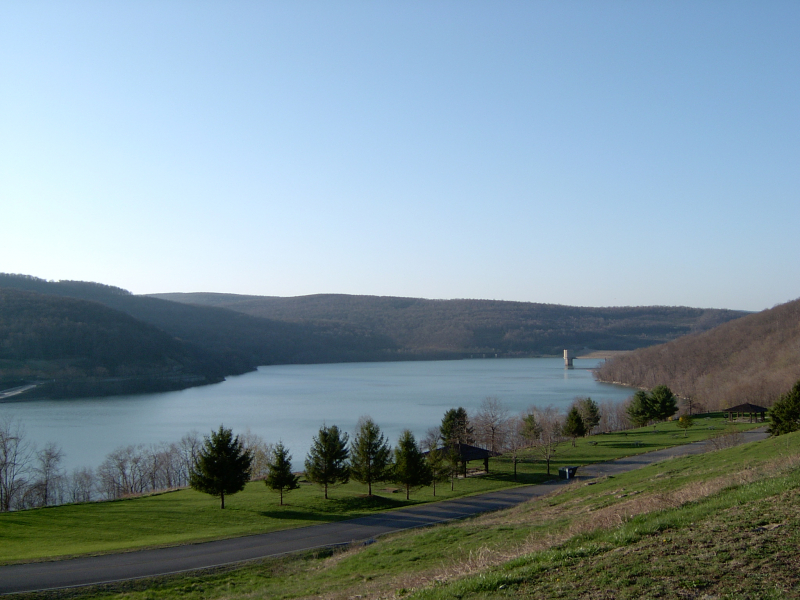
Photo: wikipedia 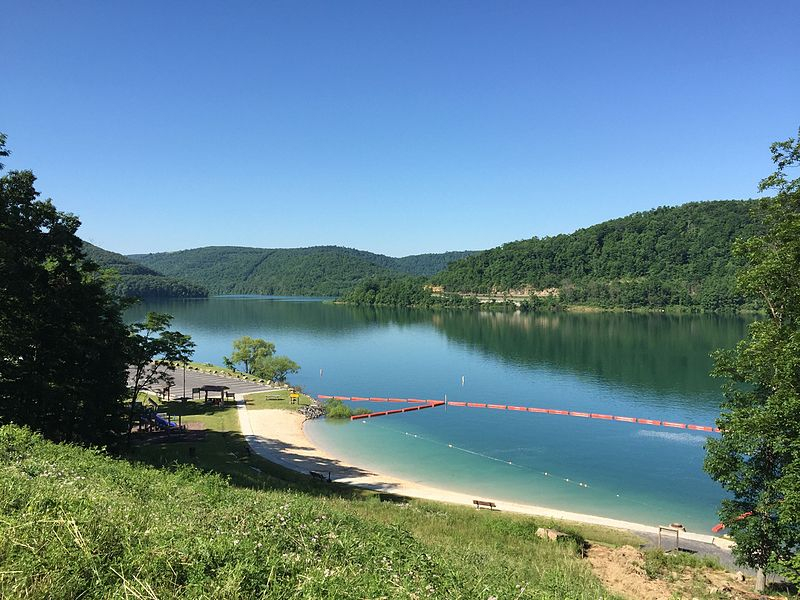
Photo: onlyinyourstate.com -
Lake Sherwood, a 165-acre mountain sanctuary tucked away in the Monongahela National Forest, is renowned for its swimming, fishing, kayaking, and paddleboarding activities. Bring your picnic supplies and spend the day on the lake's sole island, which is connected to the "mainland" by an arched walking bridge.
A full family getaway, Lake Sherwood Recreation Area offers a wide range of activities and camping opportunities. The largest lake in the Monongahela National Forest, Lake Sherwood, has standard, tent-only, and group camping sites situated along its shores.
The area's highlights include swimming beaches, a picnic area, a boat ramp, and a number of hiking routes. A parking spur, tent pad, picnic table, fire ring, and light post are included at each campground. There are showers available. There are facilities in every camping area that provide running water, flushing toilets, hot showers, and power that is only available in the summer. Vault toilets and a hand pump well are provided in the spring and fall.Location: Greenbrier County, West Virginia
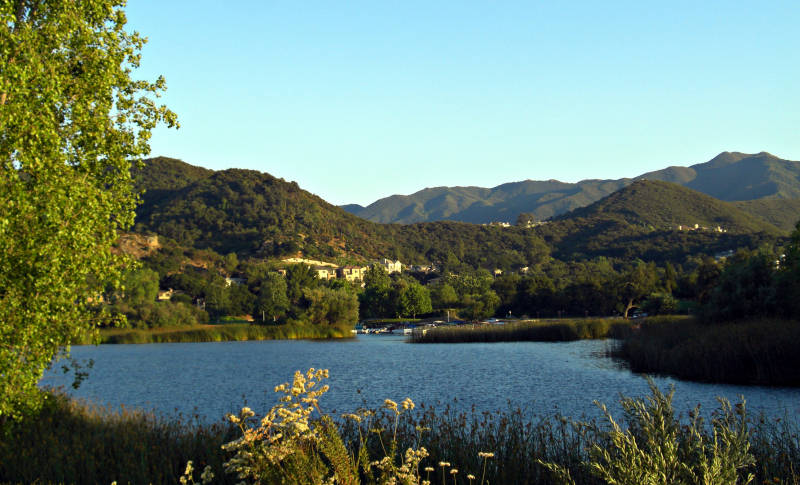
Photo: wikipedia 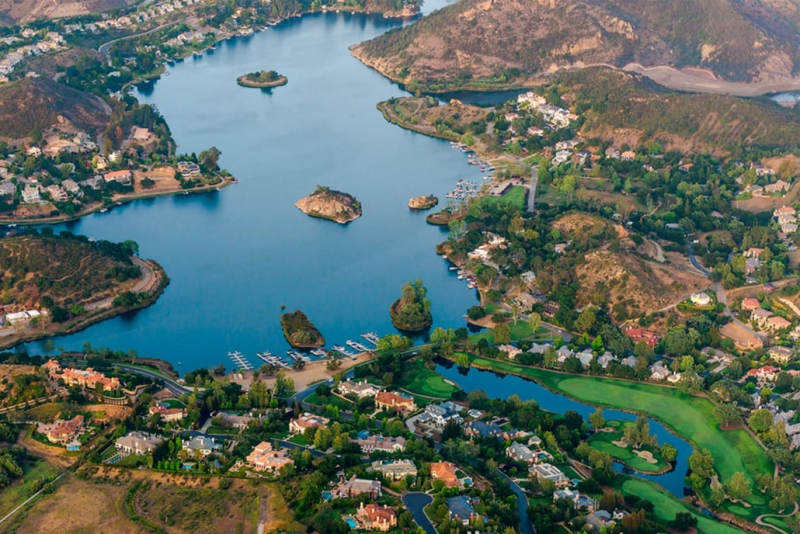
Photo: sherwoodrealestate.com -
The Little Kanawha Conservation District helped the Natural Resources Conservation Service develop North Bend Lake, a 305-acre lake. North Bend Lake is a 13.0 km long body of water with an average permanent pool width of 94 m. It is part of the North Bend State Park and is situated along the North Fork of the Hughes River in Ritchie County, close to Cairo, West Virginia.
One of North Bend State Park's top draws is North Bend Lake. Instead of a wide lake, it is narrow and feels like a wide river. Because boats are only permitted to have tiny mmotors and because there are still plenty of shallow sections with tree stumps as shelter, it is ideal for canoeing and fishing.
North Bend Lake is one of the best lakes to visit in West Virginia. The Chumash people lived there for many years. When the Spanish arrived in the late 18th century, they gave the region the name Potrero Valley after passing through what is now Hidden Valley.
Location: North Bend State Park, Ritchie County, West Virginia
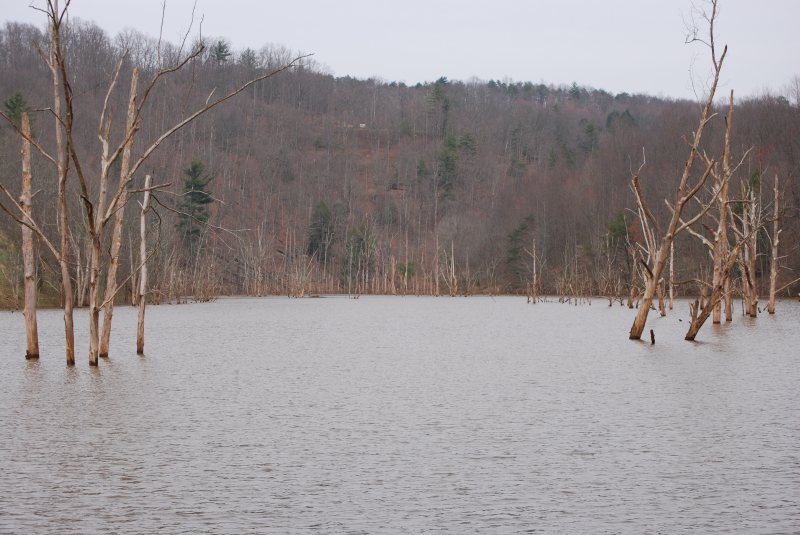
Photo: wikipedia Video: Visit Greater Parkersburg -
New Stony River Reservoir, sometimes known as Mount Storm Lake, is a 1,200-acre (4.9 km2) reservoir built on the Stony River in Grant County, West Virginia, in 1965. More than two million consumers in Northern Virginia receive energy from the 1.6 gigawatt Mount Storm Power Station, which uses it as a cooling pond. The reservoir is 3,244 feet above sea level (989 m).
A well-liked local and tourist destination is Mount Storm Lake. It keeps Mount Storm Lake warm enough for swimming, boating, and other water activities even in cooler weather when Mount Storm Power Station uses the reservoir for cooling. The water in the reservoir is also incredibly clear, with swimmers being able to see the bottom at depths of at least five to six feet thanks to the light provided on an ordinary gloomy day.
The lake is a great place to sail small boats because it is situated on the Allegheny Front, one of the windiest regions east of the Mississippi. Near West Virginia Route 93, at the lake's northern edge, there is a public boat launch. From the lake, it is possible to see more than 40 wind turbines.
Location: Grant County, West Virginia
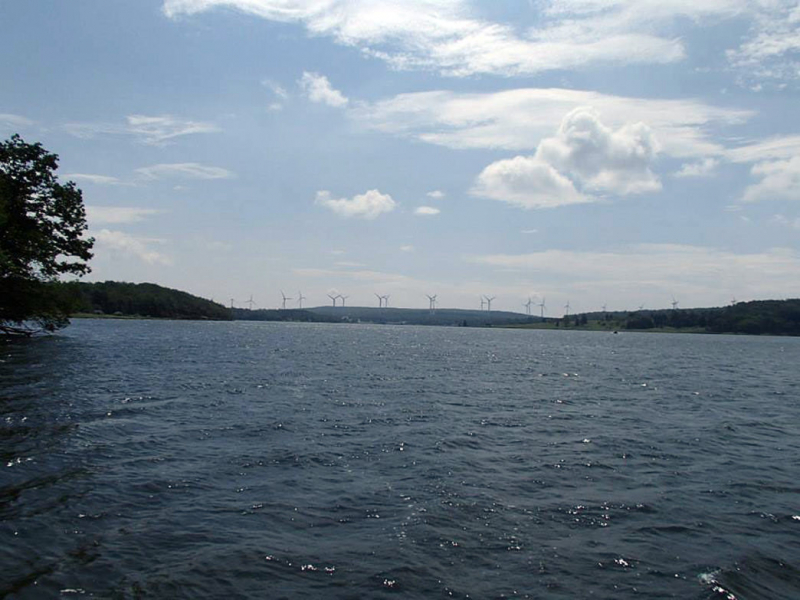
Photo: rootsrated.com Video: Darryl Buning -
Within the Gauley Ranger District of the Monongahela National Forest sits this 17-acre lake. Despite being small, the lake is charming because of the surrounding forest. The abundance of bass and panfish at Summit Lake makes fishing one of the most well-liked activities there. Rowboats and motorboats with less than 20 horsepower are permitted, however, swimming is not.
The Summit Lake Trail begins at the trailhead by ascending through a young forest that is still healing from a recent harvest. The track soon turns into a long series of switchbacks up the mountainside as you encounter more established areas of fir and hemlock. Reach a trail intersection with the Twin Lake and Carbon River Trail after about a mile of hiking. A brief, unmarked walk leads to solitary Twin Lake, which lacks both a twin and the breathtaking scenery Summit Lake offers.
The NE and S sides of Summit Lake also include a number of campsites that allow for more exploration along the Bearhead Mountain and Carbon River Trails that are close by. This lake is one of the best lakes to visit in West Virginia.
Location: Greenbrier County, West Virginia
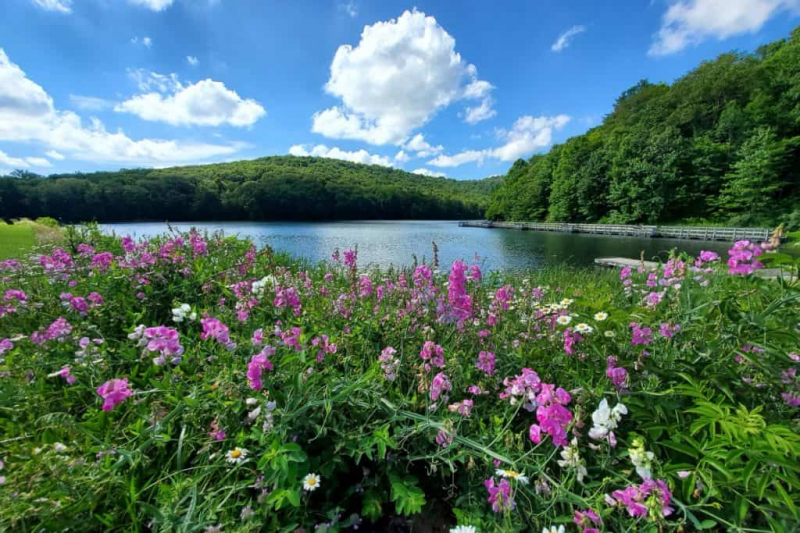
Photo: champagne-tastes.com 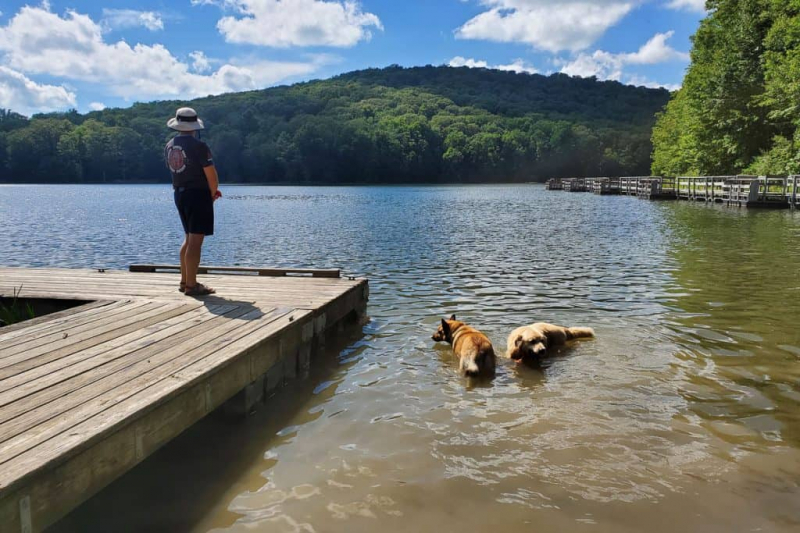
Photo: champagne-tastes.com














